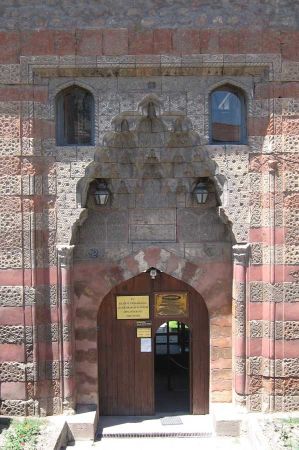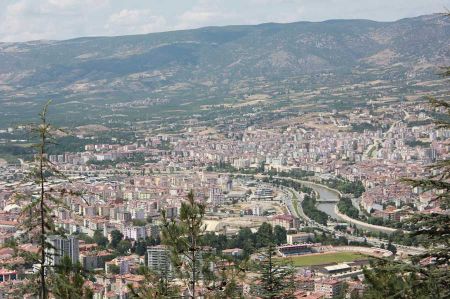Old town of Tokat and Dazimon Castle
- Written by Portal Editor
One of the most interesting Anatolian places is the provincial capital Tokat, which today has about 114,000 inhabitants. The old town on Castle Hill and the district around Hatuniye Camii reflect the decayed splendor of a long history.
Probably already inhabited in Hittite times, known in antiquity under the name Dazimon, the city was a fortified junction of the caravan routes to Central Asia until the Ottoman period. Under the Seljuks and Mongols, Tokat was the sixth largest city in Anatolia and, as a trading center, comparable to Baghdad and Bursa. The processing of copper and leather as well as the textile industry formed the basis of the city's prosperity.
Tokat, the ancient Eudoxia, is a city with a long history, but just its fortress Dazimon was of outstanding importance. Around 1021 Senekerim received Arzruni from Sebaste Tokat as a fiefdom of the Byzantine emperor. The Armenian Arzrunids had fled westward from the Seljuks. In 1045 Tokat came to the Armenian Bagratid dynasty by marriage. The Turkmen Danishmends ruled from 1071 to 1175. Trading flourished in Tokat from the 11th to the 13th centuries. In 1396 the Turkmen emirate of Tokat became Ottoman.
The Yazma towels from Tokat
The Yazmacilar Hani once housed the workshops of Tokat's famous cloth printers. The building is no longer used for production, the workshops have been relocated to new, modern buildings on the street to Amasya. The printed tokat cloths (Yazma), whose repetitive patterns are somewhat reminiscent of Southeast Asian batik, continue to be produced there. However, the old technique of stamping the cloths with wooden models has largely been replaced by modern screen printing. In Tas Hani and other places in the bazaar you can buy both the scarves and the original models.
Some of the sights of Tokat
• Tokat Castle: originally a Byzantine castle, renovated by the Ottomans
• Historic old town with numerous Ottoman buildings
• Gök Medrese: Seljuk building from 1275; the Archaeological and Ethnographic Museum is located here
• Ulu Mosque, renovated in 1679
• Taş Han: Ottoman caravanserai from 1631
• Hıdırlık Bridge: Seljuk Bridge
• Ballıca Cave
• Sebastopolis: ancient city near Artova
• Comana Pontica: ancient city near Gümenek
• Niksar (ancient Neocaesarea), former capital of the Danishmenden
In the vicinity of Tokat there are a number of prehistoric settlement mounds (in Turkish: höyük):
• Maşat Höyük near Yalınyazı
• Horoztepe
• Boyunpınar
• Bolus Aktepe
Please also read:
The Walmendinger Horn - hiking tour and alpine flowers
Raab, Rabatz and Moson-Danube near Györ - surroundings
